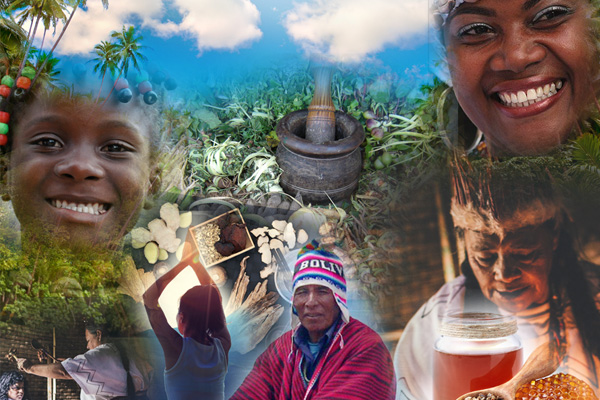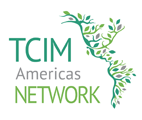Indigenous, Afro-descendant, Romani and other ethnic populations of the Americas

The Americas Region there are around 826 indigenous peoples, each one with a particular worldview and cosmogony that configure unique universes and therefore ways of being in the world and in a particular territory. The indigenous peoples of the region speak more than 550 different languages, almost a quarter of which are cross-border languages, used in two or more countries, making Latin America the region with the largest number of language families in the world, not counting the languages of the uncontacted peoples and in voluntary isolation, which are around 200 of the existing peoples and who inhabit Bolivia, Colombia, Ecuador, Paraguay, Peru and Venezuela (See ECLAC1).
In the countries of Latin America and the Caribbean, based on the population censuses for the year 2010, there is an approximate population of 45 million people belonging to indigenous peoples and they reach around 8-10% of the total population. . These peoples inhabit geographical areas of great diversity such as Patagonia, the Expanded Chaco, Amazonia, Orinoquia, Andes, the Pacific Coastal Plain, and the Continental Caribbean, as well as in lower Central America, Mesoamerica, and North America, including the Arctic Region. 87% of the indigenous people of the Americas reside in Mexico, Bolivia, Guatemala, Peru and Colombia. Brazil is the country with the most diversity of indigenous peoples with 305 peoples who speak 188 languages.
A large part of this population still resides in their traditional territories, many of which have been legally recognized by States; however, 49% of them have migrated to urban areas due to, among other things, the dispossession of their lands, environmental deterioration, displacement caused by conflicts and violence, and natural disasters (See WORLD BANK 2).
PThe Afro-descendant population in the Americas is estimated to have been around 130 million in 2015, accounting for almost 24% of the total population. Brazil has the largest Afro-descendant population, representing over half of its population. This is followed by Cuba, where 36% of people are of African descent, totalling just over 4 million. Smaller proportions are found in Colombia, Costa Rica, Ecuador and Panama, where the population of African descent represents between 7% and 10%. In Mexico and the Bolivarian Republic of Venezuela, there are around one million people of African descent, and in Peru, more than half a million (2).
This population, although it is geographically distributed throughout the countries of the region, is predominantly urban, but it is also located in areas associated with displacement and migration from neighboring countries, or in cases such as Colombia and Nicaragua, it remains concentrated in the areas of historical settlement, that is, the destination places of the enslavement process in colonial times and strongly associated with Afro culture (3). On the other hand, in countries such as Brazil, Colombia and Ecuador, some of these places of historical settlement have been recognized as territories belonging to Afro-descendants (4).
It is estimated that there are around 3 million Romani (Gypsies) in the Americas region, living in Argentina, Brazil, Canada, Colombia, Chile, Ecuador, the United States, Mexico, and Uruguay (5), originally from India, but who arrived from Europe during the colonization stage and through subsequent migratory processes.
Characterized by being a nomadic people, currently the majority of the Roma population is sedentary, but without their own territory, some still living in camps in tents or in rented houses, inside which there are windows and walls covered with cloth, evoking the inside a tent(6).
Notes
- According to UNICEF, there are 665 indigenous peoples and 420 languages in use, 103 of which are cross-border languages. These data are obtained from official censuses and triangulated with other sources. (Sociolinguistic Atlas of Indigenous Peoples in Latin America and the Caribbean | UNICEF, 2009 (Volume 1; Volume 2) as it appears in the Spanish version with the link to the Atlas.
- Estimates made by CELADE based on the percentage of 21.1% of the total population estimated for the year 2010, where the Afro-descendant population amounted to 111 million -according to census data from 16 countries in the region-.
References
- CELADE/ECLAC. Indigenous peoples in Latin America. Progress in the last decade and challenges ahead for guaranteeing their rights [internet] Santiago, Chile: Printed by the United Nations; 2014 [Cited August 2, 2023], 410 pp. Available at: https://repositorio.cepal.org/server/api/core/bitstreams/6cddee6b-30f3-43d5-ba6b-c4daf200b194/content
- International Bank for Reconstruction and Development/World Bank. Indigenous Latin America in the 21st Century [Internet]. Washington, D.C.: World Bank. 2015 [Cited August 2, 2023]. 120 pp. Available at: https://documents1.worldbank.org/curated/en/541651467999959129/pdf/Latinoamérica-indígena-en-el-siglo-XXI-primera-década.pdf
- International Bank for Reconstruction and Development/World Bank. Afro-descendants in Latin America. Towards a framework for inclusion. Washington, D.C.: World Bank. 2018. [Cited August 2, 2023]. 136 pp. Available at: https://documents1.worldbank.org/curated/es/316161533724728187/pdf/129298-7-8-2018-17-30-51-AfrodescendientesenLatinoamerica.pdf
- ECLAC. Situation of people of African descent in Latin America and policy challenges for guaranteeing their rights. [internet] Santiago, Chile: Printed by the United Nations; 2017. [Cited August 2, 2023]. Available at: https://repositorio.cepal.org/server/api/core/bitstreams/e16fd1a5-4716-4d09-b717- cf088595b0c7/content
- Hernández, Ricardo. Gypsies: Once Upon a Time in America [Internet]. Panorama cultural, The cultural newspaper of the Colombian Caribbean coast. 2021 [Cited August 2, 2023] Available at: https://panoramacultural.com.co/pueblos/7738/gitanos-erase-una-vez-america
- Salamanca G, González A. Gypsies of Chile, an ethnolinguistic approach. Atenea (Concepción) [Internet]. 1999. [Cited August 2, 2023]. 480: 141-178 Available at: https://www.academia.edu/60926553/Gitanos_de_Chile_un_acercamiento_etnolingüistico


